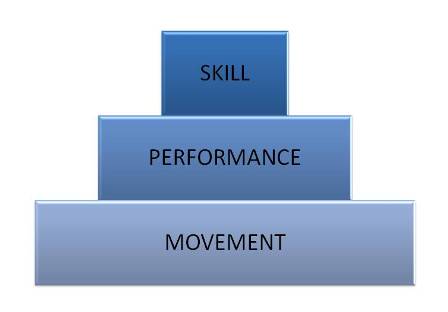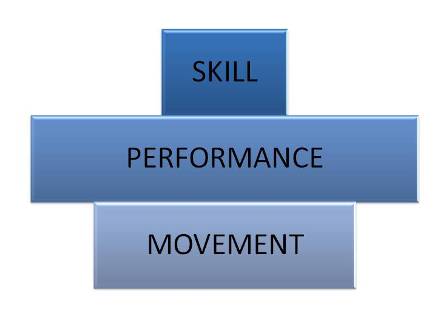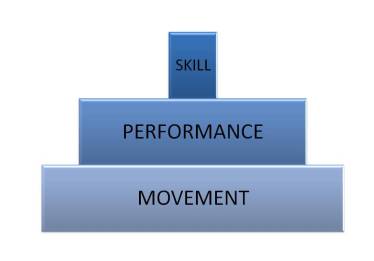Renowned physical therapist and movement expert Gray Cook first introduced the performance pyramid and its true merit and value to anyone attempting to optimize their training and true physical potential. Understanding this three layered pyramid is essential for building a better program. In addition, it really starts to provide us some clarity as to what to train and when to do so.
What is the performance pyramid?
The pyramid is made of three layers or pillars that help describe and understand human movement and movement patterns. It is constructed of three diminishing layers or pillars that describe a certain movement type. A quality pyramid should always be built from the bottom-up and have the true appearance of a pyramid with a broad base and a narrow top.
The bottom pillar is the foundation and represents one's movement potential. More specifically one's ability to perform functional movement patterns such as squatting, lunging, stepping, reaching without compensation. This layer disregards performance, meaning it is only concerned with the quality of movement; not the speed, power or strength it is performed at. We typically use the functional movement screen to measure one's foundational capacity.
The second layer represents one's functional performance or ability to perform functional movements taking quantitative variables into consideration. In other words, we are measuring how fast, explosive or forceful a given movement or movements occur. Typically we measure these abilities by testing biomotor abilities like: strength, power, speed, stamina and agility. Think standard tests like 40 yard dash, vertical jump, maximal squat tests, etc.
The top layer represents functional skill. This is used to describe and depict one's sport specific ability and skill. Typically this is, measured by sport specific tests, considering an athlete's actual stats of performance for a given sport and mostly by actual game play and competition. In other words, functional skill is best measured by how well an athlete performs at their position and sport.
There are four different constructs of the three layered performance pyramid that all athletes fall into. Understanding which pyramid best illustrates your current abilities and limitations makes it more clear on specifically what needs to be trained the most to maximize your potential.
- The optimal-performance pyramid
- The over-powered performance pyramid
- The under-powered performance pyramid
- The under-skilled performance pyramid
Optimal performance pyramid

Characterized by:
- Person whose foundation, performance and functional skills are balanced and adequate.
- Usually demonstrate great mobility and movement skills
- Usually have adequate to above average strength, speed and power
- Are more likely to stay healthy and injury-free throughout the season
Over-Powered Performance Pyramid

Characterized by:
- The ability to generate power exceeds the ability to move freely within fundamental movement patterns
- Usually demonstrate poor mobility and stability, yet may have high power production and skill
- Are at a higher risk for injury and would improve their performance further with improved movement efficiency
- Higher rate of muscle strains and "pulls"
- Movement looks labored and inefficient
Under-powered Performance Pyramid

Characterized by:
- An athlete who has great mobility but their functional performance needs improvement
- Have poor power production, with optimal or above average functional skill
- Would benefit for an appropriate strength and conditioning program.
- Poor acceleration and change of direction speed
Under-Skilled Performance Pyramid

Characterized by:
- Athlete that have adequate functional movements, and performance abilities
- Lack the required sport specific skill needed to excel in sport
- Require training that is specifically designed around skill fundamentals and techniques
- These athletes are physically ready to work with a sport-specific coach (pitching coach, swing coach, sprint coach, etc.)
- Great "athletes" in the general sense but lack sport-spefic skills
Take Home Message:
Often-times what we believe we need to be doing to improve may not actually be what is holding us back the most. The performance pyramid shows us what we need to be prioritizing in training and is critical to adhere to for long-term growth and development. Just like a car you must first build stable and durable chassis and frame, to support a high horse-power engine and transmission. Likewise, you can put the best driver behind the wheel but without a high performance engine and suspension the car will never perform at its true potential.
- Find out where you need the most work: foundation, performance or skill
- Then prioritize time spent on that specific layer of the pyramid and reassess after a few months.
Click Below for your FREE Secrets Revealed E-Book


